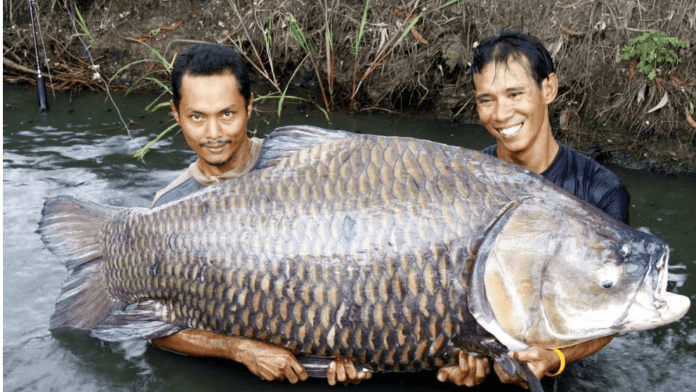News in Brief:
– The Mekong River’s giant fish, including the revered giant barb, face extinction due to threats like dams and habitat destruction.
– Local communities relying on the river for sustenance and livelihoods are at risk, necessitating urgent collective action to preserve these iconic species and their ecosystem.
The giant barb, a symbol of Cambodia’s heritage, currently stands at the brink of extinction, alongside 18 other iconic species, a report claims. While this might seem a distant woe, the looming disappearance of these colossal creatures spells trouble for local farmers and communities.
With nearly 1,500 fish species, a quarter of them exclusive to the Mekong, this river is a global biodiversity hotspot. Kathy Hughes of World Wide Fund For Nature (WWF) in the Asia-Pacific emphasised its significance, ranking it third globally for freshwater fish diversity. Yet, 19% of Mekong fish face extinction, with another 38% data-deficient, painting a dire picture.
The construction of hydropower dams, wetland conversions, sand mining, and invasive species pose existential threats to these underwater behemoths. Dams, in particular, disrupt critical migration routes, while sand mining alters sediment patterns, confusing fish and hindering reproduction.

Local impacts: a call to action
The repercussions extend beyond ecological loss. The Mekong sustains the world’s largest inland fishery, supporting over 40 million livelihoods. Dependence on wild-caught fish for protein underscores the urgency of preserving this ecosystem. Without action, local communities face economic collapse and environmental degradation.
While the situation appears grim, there is hope. Local initiatives, like fish conservation zones, demonstrate the power of community-driven solutions. Efforts to release captive-bred fish back into the wild offer a glimmer of optimism. However, these must be scaled up and supported by regional cooperation to be effective.
The Kunming-Montreal Global Biodiversity Framework offers a ray of hope, but it’s not enough. Urgent transboundary action is needed to ensure the survival of these iconic species. The clock is ticking, and collective action is the only way forward.



